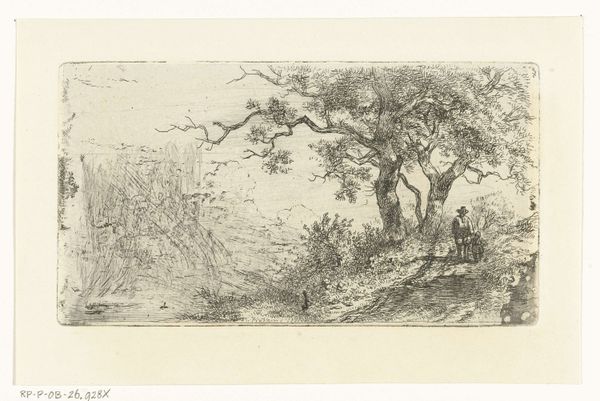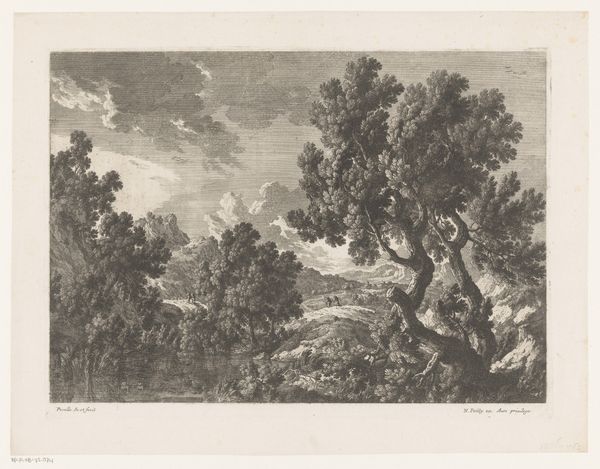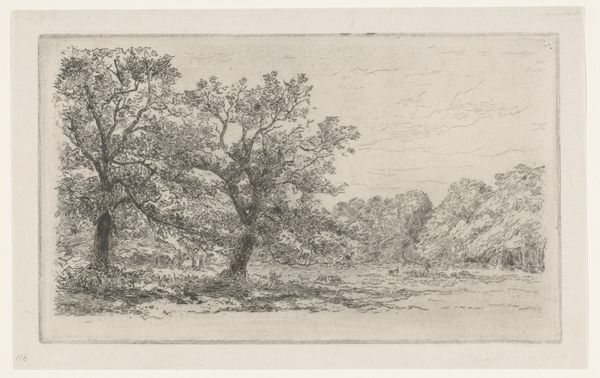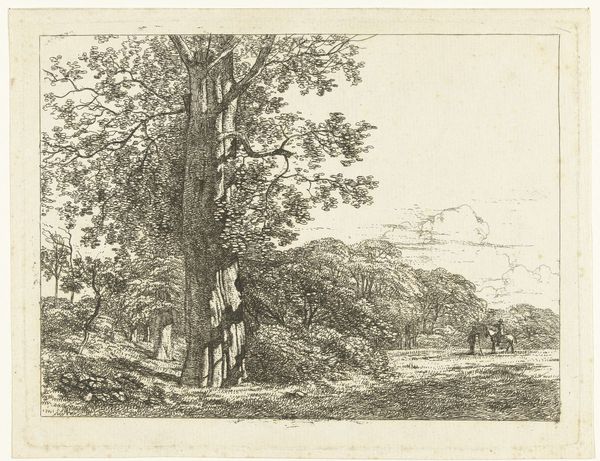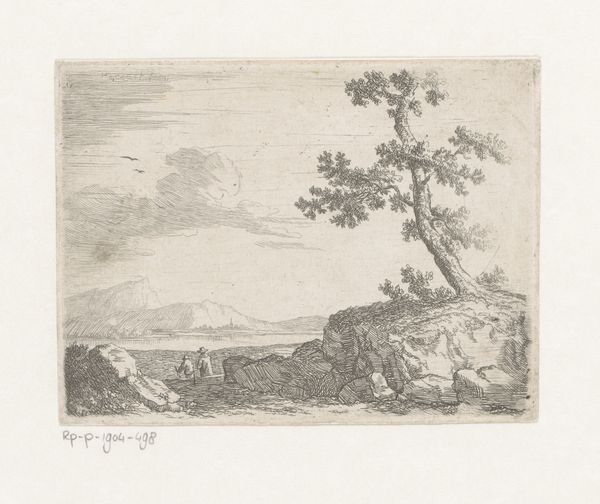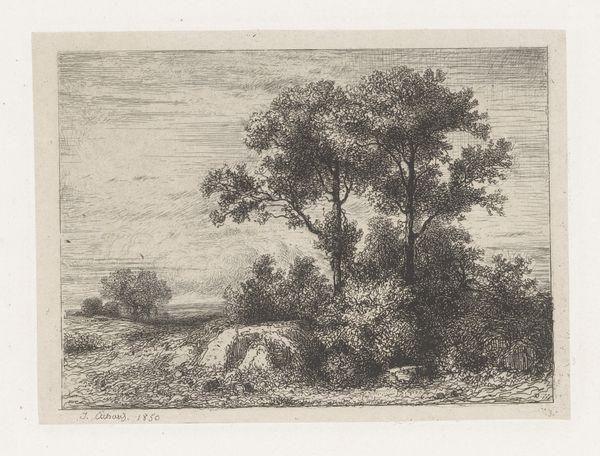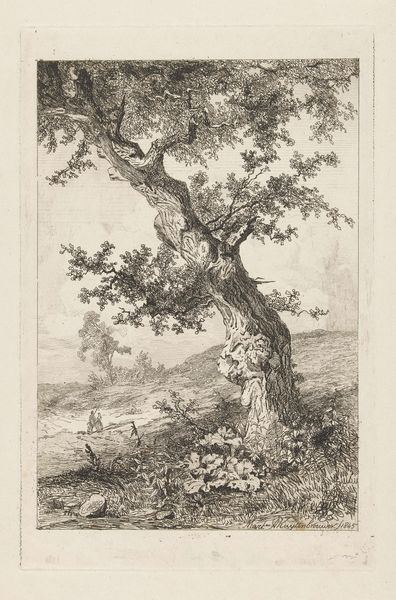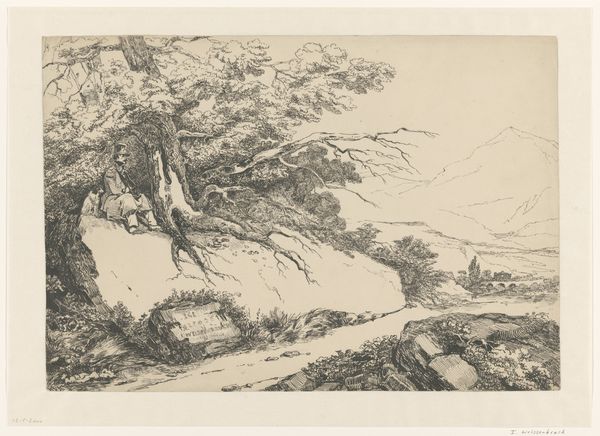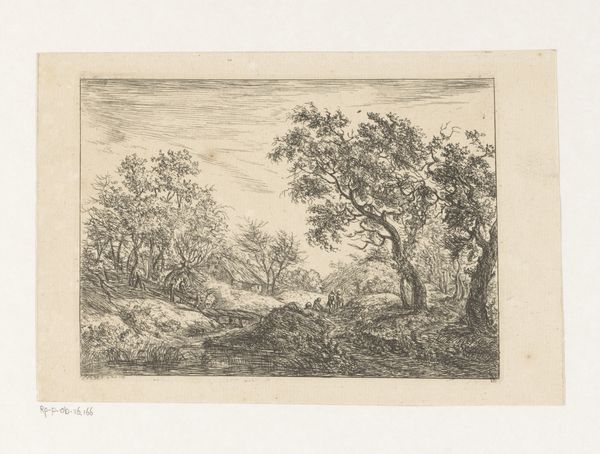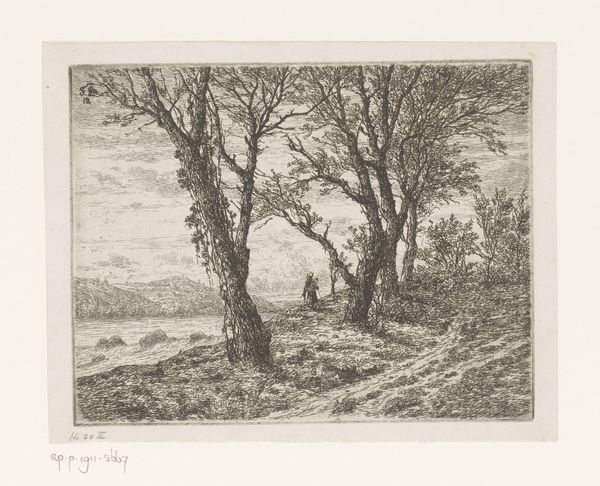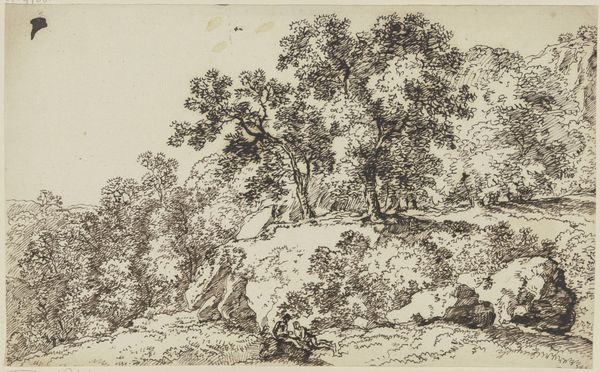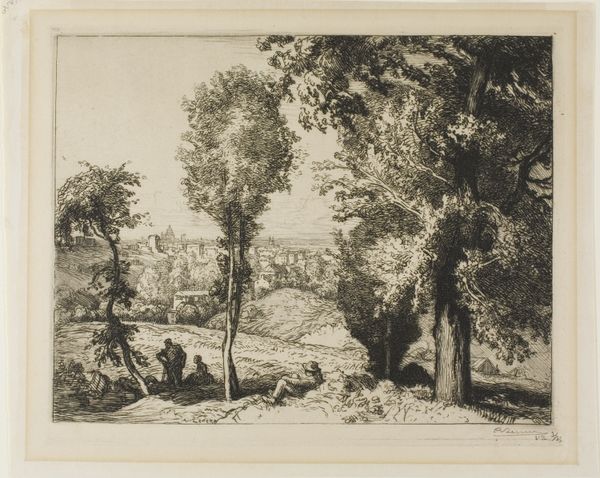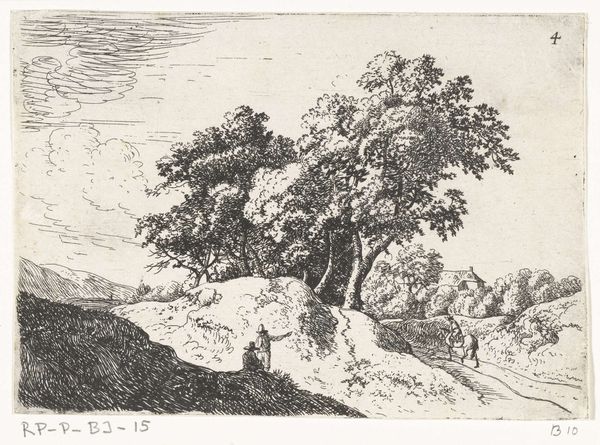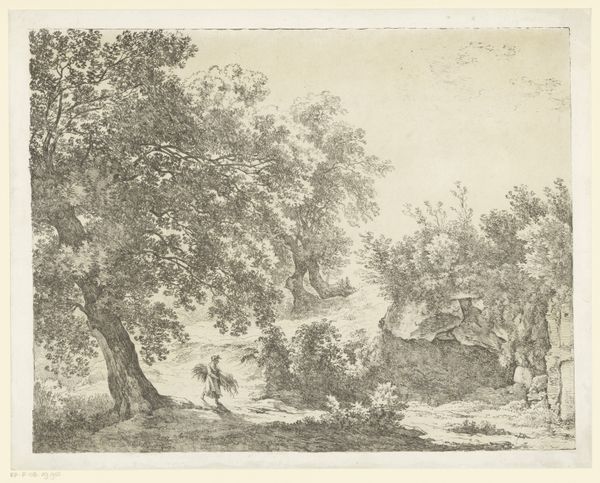
drawing, print, etching
#
drawing
#
narrative-art
# print
#
etching
#
landscape
#
figuration
#
france
#
line
#
realism
Dimensions: 186 × 319 mm (image); 198 × 330 mm (plate); 237 × 386 mm (sheet)
Copyright: Public Domain
Editor: This is Auguste-Louis Lepère’s "Christ on the Morning of Palm Sunday," an etching from 1918. It's a striking image. The starkness of the lines creates a rather somber tone. I’m curious about the narrative that Lepère is trying to convey, given the historical context. What's your take on this, as far as symbolism and social critique? Curator: Well, considering the historical context of 1918, with World War I raging, this image takes on powerful new layers. Lepère, as a Frenchman, would have been deeply impacted by the war. Here we see Christ's entry into Jerusalem, not as a triumphant king, but presented in quiet contemplation before his ultimate sacrifice. Doesn't the gathering around Christ feel almost like a counsel before a tragic event? Editor: That's a very good point; the muted celebration contrasts so sharply with the actual biblical story, doesn’t it? And I can see how you are making the link to the situation in France then. It does seem almost funereal. Curator: Exactly. The setting outside Jerusalem transforms into a space of reflection, where societal structures are confronted with their moral implications. We must remember that during World War I, traditional power structures were being challenged, and ideas about sacrifice and redemption were prevalent in people's minds. Notice how the use of etching emphasizes stark contrasts, reinforcing the social divisions and the emotional weight of the narrative. How does that make you think about ideas of privilege? Editor: It brings an added gravity to it, a sense of the inescapable. I’m seeing it more clearly now; it is a strong statement about power and its consequences. Curator: Indeed. And remember, art doesn't exist in a vacuum. It's through this critical lens that we can understand the work as both a religious depiction and a commentary on the artist’s world. Editor: This really does give me a fresh perspective. Thank you. Curator: My pleasure; looking at art as part of our historical narrative truly enriches it.
Comments
No comments
Be the first to comment and join the conversation on the ultimate creative platform.
